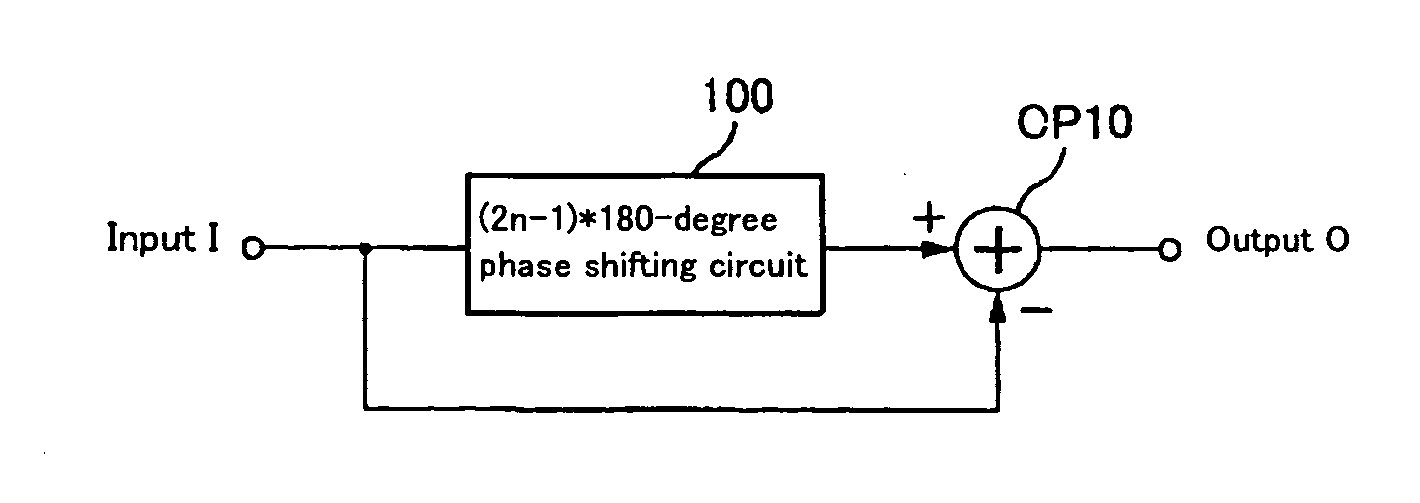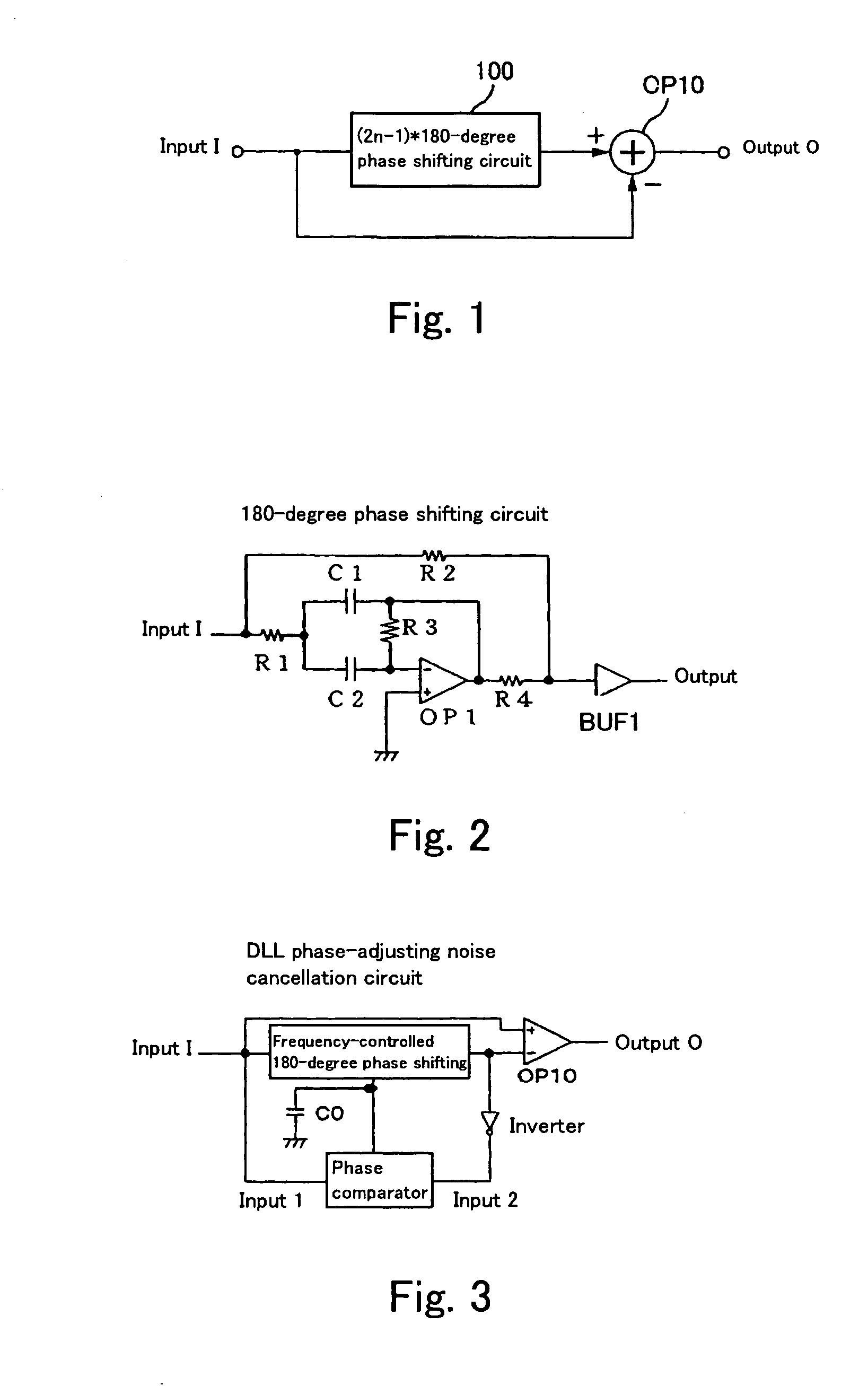Noise removal using 180-degree or 360-degree phase shifting circuit
a phase shifting circuit and phase shifting technology, applied in the field ofnoise removal circuits, can solve problems such as recording or reproduction failure and other problems, wobble signal is impossible to read correctly, clock jitter,
- Summary
- Abstract
- Description
- Claims
- Application Information
AI Technical Summary
Benefits of technology
Problems solved by technology
Method used
Image
Examples
first embodiment
SECOND VARIANT OF FIRST EMBODIMENT
[0061]The second variant of the first embodiment shown in FIG. 1 will be described with reference to FIG. 6. In the second variant, a PLL (phase-locked loop)-based phase-adjusting circuit is employed as the noise removal circuit shown in FIG. 1 to achieve synchronization with the input signal I. That is, a VCO circuit (synchronizing signal output section) is added to the first variant of FIG. 3 discussed earlier. The second variant will be described, focusing on the differences from the first variant shown in FIG. 3. The output of the phase comparator (synchronizing signal output section) shown in FIG. 5 is input to the frequency-controlled phase shifting circuit shown in FIG. 4 and to the VCO circuit as a frequency control signal that serves as a synchronizing signal. The output of the VCO circuit is fed back and input to the phase comparator (input 2). It should be noted that high-frequency noise in the phase comparator output is removed by the ca...
second embodiment
[0066]The second embodiment will be described with reference to FIGS. 8 and 9. First, a signal phase-shifted from the signal component of the input signal I by n*360 degrees (hereinafter referred to as a “360-degree shifted signal”) is generated by a n*360-degree phase shifting circuit (360-degree shifting section) 200 and output to one of the non-inverted input terminals (+) of an operational amplifier (sum output section) OP20, as shown in the block diagram of FIG. 8 showing the principle of noise removal. It should be noted that “n” is an integer. The input signal I is input to the other non-inverted input terminal (+) of the operational amplifier OP20. Therefore, an output O of the operational amplifier OP20 is the sum of the input signal I and the 360-degree shifted signal. The noise removal circuit for the input signal I is thus configured.
[0067]FIG. 9 shows a specific circuit configuration of the phase shifting circuit shown in. FIG. 8. That is, a stage consisting of an opera...
third embodiment
[0073]The third embodiment will be described with reference to FIG. 10. This embodiment is, as shown in FIG. 10 showing the principle of noise removal, the result of combination of the first embodiment shown in FIGS. 1 to 7 and the second embodiment shown in FIGS. 8 and 9. The combination produces a synergetic effect.
[0074]That is, the (2n−1)*180-degree phase shifting circuit 100 generates a signal phase-shifted by (2n−1)*180 degrees from the signal component of the input signal I (hereinafter referred to as “180-degree shifted signal”) and outputs the signal to the inverted input terminal (−) of an operational amplifier (calculation output section) OP30. It should be noted that “n” is an integer.
[0075]Further, a signal phase-shifted from the signal component of the input signal I by n*360 degrees (hereinafter referred to as “360-degree shifted signal”) is generated by the n*360-degree phase shifting circuit 200 and output to the non-inverted input terminal (+) of the operational am...
PUM
| Property | Measurement | Unit |
|---|---|---|
| phase | aaaaa | aaaaa |
| polarity | aaaaa | aaaaa |
| rotation | aaaaa | aaaaa |
Abstract
Description
Claims
Application Information
 Login to View More
Login to View More - R&D
- Intellectual Property
- Life Sciences
- Materials
- Tech Scout
- Unparalleled Data Quality
- Higher Quality Content
- 60% Fewer Hallucinations
Browse by: Latest US Patents, China's latest patents, Technical Efficacy Thesaurus, Application Domain, Technology Topic, Popular Technical Reports.
© 2025 PatSnap. All rights reserved.Legal|Privacy policy|Modern Slavery Act Transparency Statement|Sitemap|About US| Contact US: help@patsnap.com



